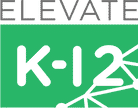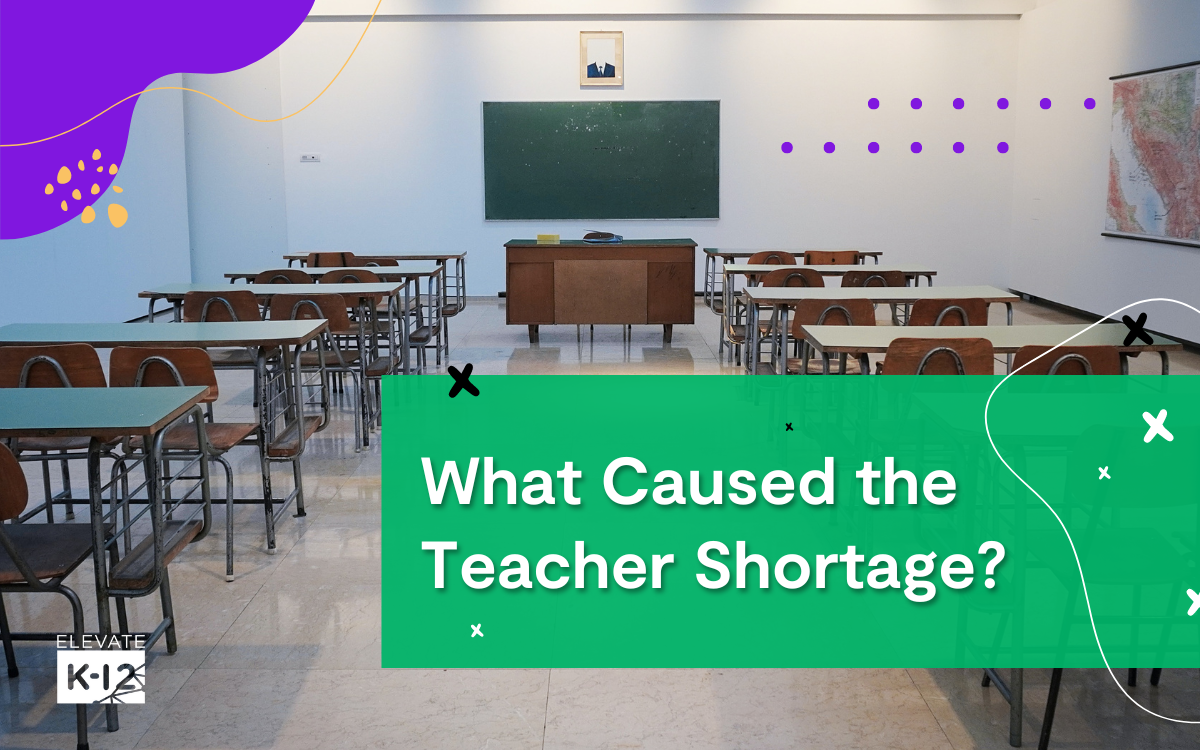A growing number of U.S. schools continue to struggle to find qualified educators. According to 2022 data from the National Center for Education Statistics (NCES), 18% of public schools in the United States had one vacant teaching position, while 26% reported multiple vacancies.
In context, 44% of public schools are understaffed. Public schools from high-poverty school districts are hit the hardest, with 55% reporting teacher shortages compared to 40% in low-poverty districts.
Low wages, high workloads, and challenging working conditions are some of the reasons the education sector faces a teacher shortage. However, the problem is more complex than these surface-level issues.
The 5 main causes of the current teacher shortage
A teacher shortage is defined as educator job vacancies that cannot be properly or adequately filled.
In a teacher shortage, the vacancies are noticeable and directly impact education quality. It’s easy to blame the pandemic on the teacher shortage because it stressed our entire education system more than we could have imagined.
However, teacher shortages have existed in varying degrees for a very long time — and will likely persist well into the future for these five reasons:
1. Low Teacher Salaries
Teaching has long been considered a noble profession, as educators shape the minds of future generations. However, despite the importance of their work, teachers are underpaid compared to other professions with similar education requirements.
According to 2022 data from NCES, the average annual salary for American elementary and high school teachers for 2021–22 was $69,480. This is significantly lower than the average annual salaries of other professions requiring a bachelor’s degree, such as accountants ($78,000) and registered nurses ($81,220).
Coupled with rising living costs and student loan debt, the low pay discourages new teachers from entering the workforce and creates dissatisfaction among current educators. Many leave the profession for higher-paying jobs, fueling the teacher shortage.
2. High Workload
Teacher workloads have grown exponentially over the last few years. Teachers who once taught in person suddenly had to figure out how to teach online during a global health crisis. Then, many teachers had to figure out how to provide both in-person and virtual instruction, which doubled their workload in many cases.
Now, with a nearly complete return to in-person school, teachers have to manage the adjustment for themselves and their students. On top of all of this, many teachers have to juggle large class sizes, requests to substitute during their preparation periods, and requests to teach subjects outside of their expertise.
Teachers handle a lot in stride, but they’re not invincible. The high workload, which only continues to increase, is a significant part of the teacher shortage in America because it leads to burnout and makes the career less appealing to prospective candidates.
3. Unrealistic Pressures and Expectations
Teachers are superheroes. They know how to reach, engage, and connect with our children; they have vast reservoirs of patience; and they are incredibly creative. Many of us also have fond early memories of a teacher who made a huge difference in our lives.
That said, sometimes society’s expectations of teachers get a little out of control. Perhaps it’s too easy to forget that while teachers are superheroes, they’re humans first and can suffer under unrealistic pressures.
High expectations have a purpose, but they can go too far. Over the last few years, teachers have had to completely change their working methods while meeting the same standards. In many cases, they’re meeting even higher — or more intensive — standards, like grappling with the surge in school violence and student mental health crises. With the many unrealistic pressures and high expectations, it’s no wonder teachers are seeking other careers or choosing not to enter the field.
4. Challenging Working Conditions
Teaching is a challenging job. Teachers in many schools face overcrowded classrooms, a lack of resources, and complex student behaviors. They’re also responsible for creating lesson plans, grading assignments, and providing mentorship and support to students.
The long hours and workload contribute to high stress levels and burnout, causing many teachers to leave the profession or take extended breaks. A study published on MDPI, Stress, Burnout, Anxiety and Depression among Teachers: A Scoping Review, reveals the following startling ranges among teachers:
- Stress: 8.3%–87.1%
- Burnout: 25.12%–74%
- Anxiety: 38%–41.2%
- Depression: 4%–77%
While dissatisfaction with these challenging conditions is understandable, it creates significant gaps for superintendents and students. That’s where Elevate K-12 comes in: to help bridge these gaps in the classroom by offering LIVE synchronous teaching with a certified teacher tailored to each unique grade, level, and subject.
Contact Elevate K-12 to see how we can help your district with any teacher shortage challenges you may be facing.
5. Teachers Feel Underappreciated, Silenced, and Unsupported
Even though helping students learn and grow can be highly fulfilling, teachers may sometimes feel underappreciated, silenced, and unsupported. Several problems are to blame for this:
- Little autonomy in the classroom
- Lack of support from the school administration
- Overwhelming parental demands and criticism
Rigid curriculum requirements, standardized testing, and constant policy changes from lawmakers exacerbate these issues further.
The culmination of these challenges impacts morale, causing teachers to seek careers where they feel more valued and supported. Without systemic changes prioritizing teachers’ empowerment and support, there’s an imminent risk of losing dedicated professionals to other fields.
The Negative Effects of a Teacher Shortage
We can see many of the side effects of teacher shortages now, but their full impact will take time to unfold. This is because what happens in classrooms today directly shapes our future.
Below, we’ll dive deeper into the negative effects of the teacher shortage on students, schools, and communities.
The Negative Impact the Teacher Shortage Has on Students
A teacher shortage can hinder students’ achievement, limit opportunities for learning, and impact graduation rates. Negative impacts of teacher shortages on students also include:
- Reduced instructional effectiveness: When there’s a teacher shortage, schools often have to combine classes, hire unqualified teachers, or rely on long-term substitutes.
While substitutes are a helpful short-term resource, they’re not ideal for long-term needs because typically, they’re not certified and often aren’t experts in the subjects they’re assigned to teach. This decreases the quality of instruction students receive.
- Less individualized attention: With larger class sizes and fewer teachers, educators struggle to give each student the individualized attention they need to succeed.
- Disruptions to learning: Teacher turnover disrupts student learning significantly. Whether teachers leave mid-year or schools frequently shuffle staff, it can cause students to face repeated material, miss key topics, and struggle with different teaching methods.
This turnover also severs trusted student-teacher relationships, which can lead to disengagement, reduced participation, and a decreased enthusiasm for learning.
- Reduced educational opportunities: Teacher shortages can lead to schools cutting classes or programs, limiting the educational opportunities available to students. Schools in low-income areas, where students may not have access to resources outside of school, suffer the most.
The Negative Impact the Teacher Shortage Has on Schools
Schools are also not immune to the negative effects of a teacher shortage. Some of these impacts include:
- Increased stress and workload: Teacher shortages can even further increase stress and workloads for the remaining teachers. This can lead to burnout and higher teacher turnover rates.
- Difficulty recruiting and retaining high-quality teachers: This is especially true in rural and low-income areas. Attrition rates are also high, with many elementary school teachers leaving the profession within the first five years.
- Increased costs: Teacher shortages can lead to increased costs for schools. For example, schools have to spend more money on recruiting and training new teachers and may also have to pay teachers overtime or hire substitute teachers.
The Negative Impact the Teacher Shortage Has on Communities
The negative impact of a teacher shortage extends beyond the classroom and school walls. It can have lasting effects on communities as well:
- Reduced quality of education: Teacher shortages can lead to a decrease in students’ education quality. This can hurt the community as a whole, making it more difficult for students to succeed in college and the workforce.
- Brain drain: Teacher shortages can lead to a brain drain from communities, as teachers leave to find jobs in other areas with better salaries and working conditions. This can make it more difficult for communities to attract and retain other professionals.
- Economic impact: Teacher shortages can harm the local economy. When teachers leave their jobs, the demand for housing and other goods and services in the community can be reduced.
We must come together to solve teacher shortages today and prevent them from happening in the future. Unfortunately, for many schools and districts, it is an uphill battle. They need a solution that’s feasible to implement, flexible to fill different types of teacher shortages, and highly effective. Does a solution like this even exist? Thankfully, yes.
How Elevate K-12 Solves the Teacher Shortage
Elevate K-12 is changing the game and providing a sustainable solution to the national teacher shortage crisis.
We provide high-quality LIVE synchronous instruction to K-12 classrooms, helping schools and districts address teacher shortages and improve the quality of education. Our passionate and certified LIVE Teachers bring expertise, energy, and an engaging teaching style to help students succeed.
Elevate K-12’s mission is to ensure that all students — regardless of location — can access high-quality instruction through innovative technologies and collaborative teaching methods such as Proprietary Live Instructional Management Technology, Live Instruction Service, and Curriculum and Classroom Management.
Get in touch with Elevate K-12’s knowledgeable team for more info on how to incorporate a sustainable solution for your district.

